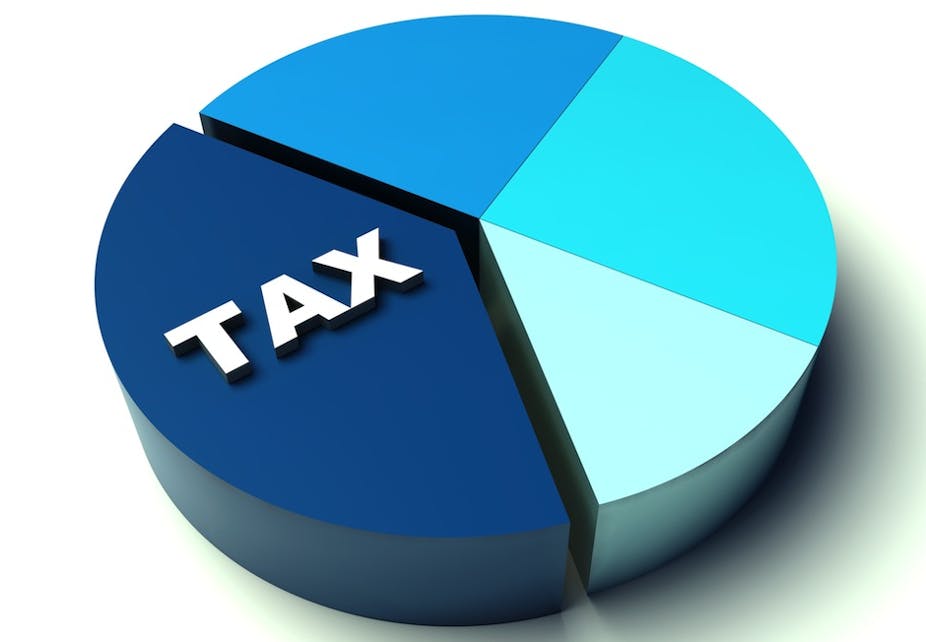In recent days it’s been suggested the Commission of Audit should look at so-called tax expenditures as well as government spending as traditionally defined. Writing in the Australian Financial Review, John Hewson suggested that “the government’s treatment of tax expenditures will clearly define the nature and extent of their commitment to genuine tax and expenditure reform”.
Sounds very impressive – unfortunately what he is really proposing isn’t tax reform so much as simply higher taxes. At The Conversation Dale Boccabella writes that:
Attaining the goals of fairness, equity and efficiency through our public finance system dictates that all the main value exchanges between a sector or taxpayer grouping and government should be taken into account when determining whether the current level of “expenditure” is appropriate.
That seems very sensible. Neither of them is wrong – but their arguments have less practical policy importance than simply looking at traditional government spending. To understand why this is the case we need to drill into the idea of tax expenditure.
The notion of tax expenditure was first developed by former Harvard Law professor Stanley Surrey in the late 1960s while working in the US Treasury Department.
He took the view that government could influence economic behaviour either by spending money or by not taxing that behaviour. His argument was that the taxation process consists of two components; defining the tax system, and then creating exemptions to that tax system that favour specific industries, individuals, or activity. Tax expenditures take the form of exclusions from the definition of taxable income, tax credits, non-standard rates, and so on.
In theory that sounds very simple but the devil is in the detail. As the OECD has conceded, “definitions of exactly what constitutes a ‘benchmark’ tax system – used to identify tax expenditures as deviations from the benchmark – are controversial”.
In practice tax expenditures are created when the actual tax system deviates from an ideal tax system to the apparent benefit of a narrow group of taxpayers. The difficulty is in establishing the ideal tax system – and, of course, who gets to define that “ideal tax system”.
When any policy issue revolves substantially around the question of “who gets to play god?” there is always trouble on the horizon. Economists seem to make this mistake a lot with economics Nobel Laureate James Buchannan arguing that economists enjoy playing god and imposing their own preferences through their policy prescriptions.
In the ideal Treasury tax system home owners would be taxed for living in their own homes. Who knew that buying your own home was a tax rort? The GST would apply to health and education, and there would be no superannuation tax concessions.
Then there are the measurement problems.
There are three approaches to measuring the size of tax expenditures; revenue foregone, revenue gain, and equivalent outlay. The first thing to note is that the three different approaches can generate very different numbers. Revenue foregone is the easiest estimate of tax expenditure, but the most inappropriate. Revenue gain figures are likely to be wishful thinking. These two measures, however, are the measures Treasury usually reports in the annual Tax Expenditure Statement.
If tax expenditures are an alternate mechanism to achieve a given aim then the correct method of evaluating the trade-off between actual expenditure and tax expenditure is the equivalent outlay approach. That approach, however, would involve Treasury having to estimate hypothetical policies and appropriate costings. In other words, a “correct” estimate of tax expenditure would involve comparing the cost of a hypothetical policy to a deviation from a hypothetical tax system. With all those hypotheticals Treasury would be able to generate arbitrarily large numbers.
The biggest numbers usually relate to things like owner-occupied housing and superannuation. It is true that if the capital gains tax applied to the family home that more tax would be paid. Yet no Australian government has proposed such a policy. It is true that if superannuation contributions were taxed at the marginal rate that more tax would be collected. Again, no Australian government has proposed such a policy. Similarly, if there were no GST exemptions more tax would be paid. But those exemptions weren’t designed to favour any particular industry; rather they were the political price the Howard government paid to get the GST through the Parliament.
Mind you, economists and tax lawyers don’t normally point to the big ticket items when talking about tax expenditures. Rather they tend to point to things like the car fringe benefits tax concession and meal and entertainment fringe benefits tax concessions in the non-profit health sector.
What Treasury doesn’t report, and most people gloss over, is the incidence of tax expenditure. Who gets the benefit? When it comes to matters of taxation most people instinctively think that loopholes and tax expenditures must benefit high-income earners or those who are politically connected. As we saw during the car fringe benefit tax debate last year, however, most of the beneficiaries were individuals on modest incomes. So too with the meals and entertainment cards so common in the non-profit health industry – most workers in that industry are not high-paid doctors and specialists, but modestly paid nurses, cleaners, and hospital staff.
All this isn’t to say that tax expenditures aren’t important – but their definition is rubbery, their magnitude arbitrary, the largest expenditures politically not negotiable, and their incidence unclear. It is unsurprising then that the government and the Commission of Audit will be concentrating on those aspects of government spending that are well understood.

